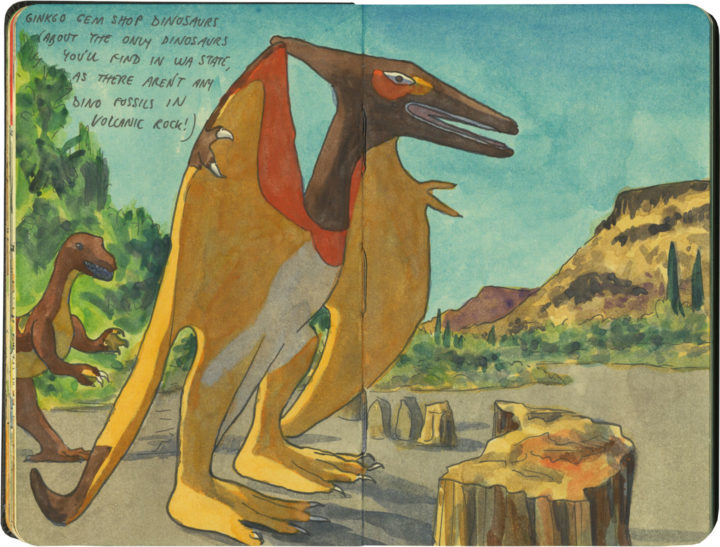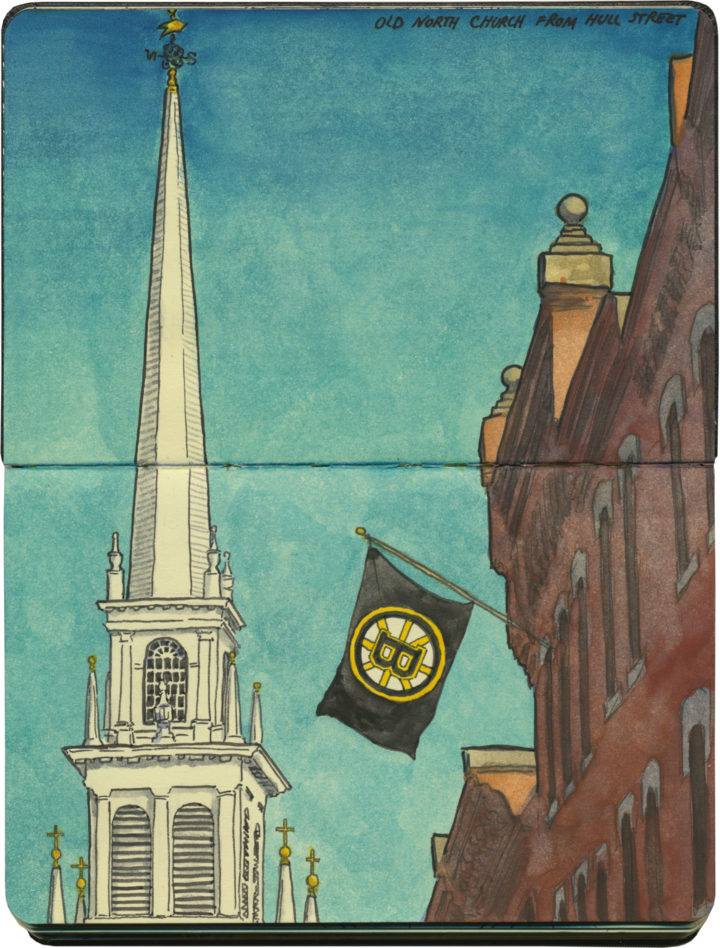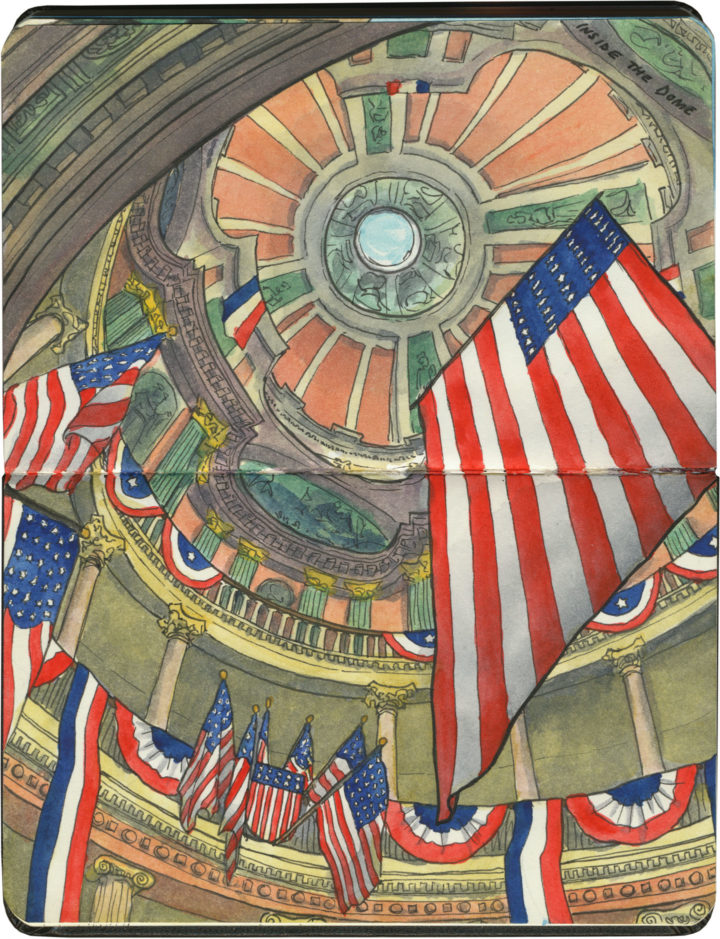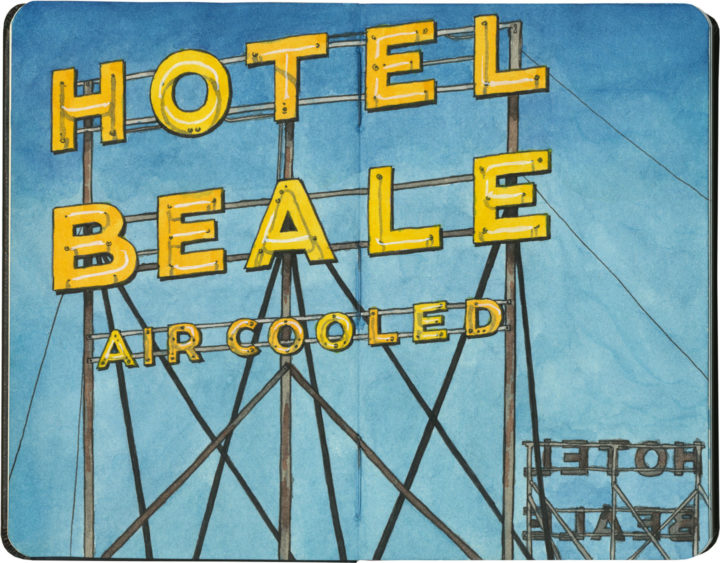This post is part of an ongoing series called 66 Fridays, which explores the wonders of old Route 66. Click on the preceding “66 Fridays” link to view all posts in the series, or visit the initial overview post here.
In its heyday, Route 66 was a symbol of American prosperity, modernity, technology and personal freedom—not just because of the rise of the middle class in that era, but also thanks to all the new technologies that allowed more and more people to live in relative comfort. In the post-war 1920s people started buying big-ticket items on credit; after World War II, good jobs were abundant and people had even more disposable income. In both eras, many families owned their own automobiles for the first time: suddenly people had both the means and the tools to take vacations in far-off places, and Route 66 showed them the way.
And the Mother Road was lined from toe to tip with modern notions and attractions. Neon tubes, a recent invention, lined every urban commercial strip along the way. Budget-minded travelers could stay in newfangled motor hotels, and even park their cars in garages attached to their rooms. But perhaps the most important invention, the key to the Mother Road’s success, was the advent of air conditioning.
Like most vacationers do today, Route 66 road trippers tended to take their vacations in the summer. And 66 cuts its path through a part of the country with some seriously warm climates. August in the Ozarks is hot and sticky, but summer in the Sun Belt can be downright dangerous. Air conditioning became widely available in the late 1920s, just as the first alignments of 66 were being laid out. The technology wasn’t just convenient for hotels or restaurants looking for a perk to advertise; it was downright revolutionary, in that it allowed the entire American Southwest to be opened up for large-scale development.
Of course, the Southwest is littered with examples of the downsides of said development, but now that I’ve traveled Route 66 at the very zenith of a scorcher of a summer, the logic of advertising “air cooled” rooms is plain as day. I can now attest to the gratitude one feels when stepping into an icy-cool room after a day spent in 115-degree heat. And neon signs like this one, advertising such a technological miracle, shimmer like desert mirages promising an oasis just ahead.



















